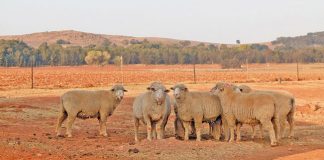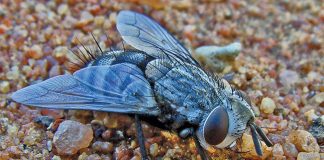
Photo: FW Archive
I have known lamb weaning rates in communal farming areas to be as low as 8% to 15%. This means that only eight to 15 lambs from every 100 breeding ewes survive into adulthood!
READ Letelle sheep: profitable and resilient
If you wish to be profitable and grow your farming enterprise, you should have a lamb weaning rate of at least 85%. In fact, you should be striving to achieve in the region of 90%.
If you consistently produce low reproduction figures, you won’t have enough female offspring to replace ewes that are too old. Female animals are usually sold as ‘old ewes’ at anything from seven to eight years (depending on nutritional and environmental issues), but some ewes may produce for slightly longer.
Be sure to replace ewes before they begin to ‘slate’ or lose their teeth completely due to wearing-down. Slate ewes or ‘gummers’ (teeth worn right down to the gums) will struggle to raise lambs, particularly in a harsh environment where there may be a shortage of grazing or feed.
Vaccination
To keep lamb losses as low as possible, it’s crucial to vaccinate your sheep at least once a year against prevalent diseases such as pulpy kidney, a lethal disease of young sheep. Newborn lambs have some immunity against this disease, but this wears off within a few months.
Use a broad-spectrum vaccine that covers seven diseases or more. Don’t deworm lambs before they have been vaccinated; this can actually bring on a bout of pulpy kidney.
READ Sheep farming: the best ways to reduce lamb losses
Other causes of this disease can be a sudden change in the quality of feed, such as when the first green grass appears or when livestock are put onto high-quality grain rations.
Many communal farmers fail to vaccinate their livestock and this is why lamb weaning rates are so low in communal farming areas. In fact, in much of my project management work, pulpy kidney is the leading cause of young sheep fatalities. Healthy-looking sheep suddenly become ill without showing any previous signs of illness.
Top tips
Here’s a handy checklist to ensure that your animals stay healthy, and your business makes more profit:
- Keep precise dates of when your lambs are born.
- Insert an ear tag on each lamb to indicate the date of birth. This will help you keep track of the age of each sheep without having to check its teeth.
- Vaccinate the lambs at least once (boosters based on the vaccine manufacturer’s advice are also important) between the age of four to six weeks. Some commercial farmers may wait a bit longer (around eight weeks), but in a communal farming area it’s best to vaccinate as early as possible. Don’t, however, vaccinate before three weeks of age.
- Make sure that the vaccines you buy are kept on ice, and use
them before they experience any significant rise in temperature. If they warm up, they may not provide your lambs with immunity. Never use expired vaccines. - Don’t dose or deworm lambs before they have been vaccinated; wait until after their first vaccination. Also, wait 10 days after the first vaccination before giving the lambs creep feed.
- Keep a list of important times and dates, including a vaccination date or period each year when all of your livestock (including adults) need to be vaccinated.
- Lambs are prone to serious worm infestation, particularly in areas where new livestock is introduced regularly. For this reason, keep a proper record of when you deworm the animals so that you know when to carry out follow-up treatments.
- Procedures such as tail-docking and castration result in wounds, and certain diseases can enter the animal’s body through these.
- For this reason, carry out these procedures after vaccination; vaccinated lambs are likely to be less susceptible to these diseases.
- Keep wound sprays and antibiotics on hand for these procedures.
The facts speak for themselves
The simple precautions and procedures described above have been proven to work. They have been applied in communal farming areas in which I run farming projects, and I’ve noted dramatic rises in lamb weaning rates. In some cases, the rate increased from 15% to 75% in one year!
Shane Brody is involved in an outreach programme aimed at transferring skills to communal farmers.














